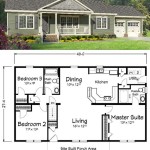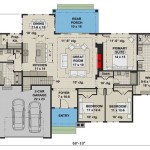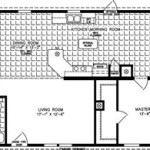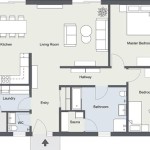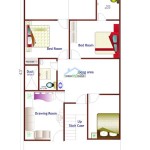Design Your Own House Floor Plan
Creating a floor plan is an exciting and important part of the home design process. It lays the foundation for the structure, functionality, and overall aesthetic of your dream home. Whether you're a seasoned architect or a first-time homeowner, designing your own house floor plan can be a rewarding experience. Here's a comprehensive guide to help you get started:
1. Gather Inspiration and Define Your Needs
Before you start sketching, it's essential to gather inspiration and define your specific needs. Consider the size and layout of your family, your lifestyle, and any special requirements you may have (e.g., accessibility features, home office space). Visit model homes, browse magazines, and consult with professionals to find ideas and determine what works best for you.
2. Measure and Draft the Existing Plan
If you're renovating an existing home, start by measuring and accurately drafting the current floor plan. Measure the rooms, walls, windows, and doors, and note any existing structural elements such as load-bearing walls and utility lines. This will give you a solid foundation to build upon and avoid costly mistakes during construction.
3. Plan the Room Layout
The room layout is crucial for both functionality and aesthetics. Consider the flow of traffic between rooms, the placement of windows for natural light, and the relationship between different spaces. Experiment with different configurations until you find a layout that meets your needs and creates a harmonious living environment.
4. Determine the Size and Shape of Rooms
Allocate space wisely according to the intended use of each room. Consider the optimal dimensions for bedrooms, bathrooms, living areas, and other spaces. Sketch in furniture and appliances to scale to ensure you have enough space for your needs without creating cramped or oversized rooms.
5. Designate Zones and Functions
Define specific zones and functions within your floor plan. For example, create a private sleeping zone with bedrooms and bathrooms, a social zone with a living room and kitchen, and a working zone with a home office or study. Clearly delineate these areas for a well-organized and efficient home.
6. Consider Storage and Circulation
Adequate storage is crucial for maintaining a tidy and functional home. Plan for closets, pantries, built-in shelves, and other storage solutions throughout the floor plan. Additionally, ensure there's ample circulation space in hallways, doorways, and other areas to prevent congestion and improve accessibility.
7. Optimize Natural Light and Ventilation
Maximize natural light and ventilation by strategically placing windows and doors. Consider the orientation of your home and the path of the sun to ensure rooms receive ample daylight. Cross-ventilation can also improve indoor air quality and reduce energy costs.
8. Plan for Utilities and Mechanical Systems
Don't forget to consider the placement of utilities (e.g., plumbing, electrical, HVAC) and mechanical systems (e.g., water heater, furnace) in your floor plan. These elements are vital for the comfort and functionality of your home, so ensure they're properly integrated without compromising the aesthetics or efficiency of the space.
9. Seek Professional Advice
If you're not confident in your design skills or dealing with complex structural changes, consider consulting with an architect or licensed contractor. They can provide expert advice, ensure your plan meets building codes, and help you create a floor plan that fully meets your needs and aspirations.
10. Review and Refine
Once you've completed your initial floor plan, take some time to review and refine it. Seek feedback from family members, friends, or professionals to gain different perspectives. Make adjustments as needed to optimize the functionality, flow, and overall appeal of your home design.
Remember, designing your own house floor plan is an iterative process that requires patience, creativity, and attention to detail. By following these guidelines and seeking professional advice when necessary, you can create a floor plan that truly reflects your unique needs and aspirations, laying the foundation for a beautiful and functional home that you'll cherish for years to come.
House Plans How To Design Your Home Plan

Design Your Own Home House Designing Homes

House Plans How To Design Your Home Plan

Create Floor Plan

Creating Your Dream Custom Floor Plan Citadel Signature Homes

Make Your Own Blueprint How To Draw Floor Plans

Floor Plans Learn How To Design And Plan

Make Your Own Blueprint How To Draw Floor Plans

House Plans How To Design Your Home Plan

Floor Plans Learn How To Design And Plan


